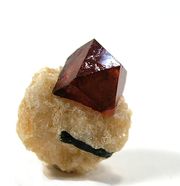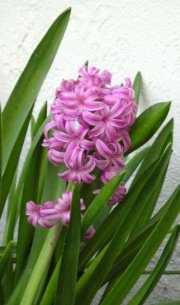Difference between revisions of "Hyacinth"
Jump to navigation
Jump to search
m (Text replace - "== Authority ==" to "== Sources Checked for Data in Record ==") |
|||
| Line 1: | Line 1: | ||
| − | [[File: | + | [[File:Red zircon.jpg|thumb|Red zircon stone<br>credit: Rob Lavinsky]] |
== Description == | == Description == | ||
| Line 5: | Line 5: | ||
2) A plant, ''Hyacinthus orientalis'', that grows from bulbs and produces blue-purple flowers. It is also called jacinth. | 2) A plant, ''Hyacinthus orientalis'', that grows from bulbs and produces blue-purple flowers. It is also called jacinth. | ||
| − | + | [[File:HyacinthPink3_wb.jpg|thumb|Pink hyacynth]] | |
== Synonyms and Related Terms == | == Synonyms and Related Terms == | ||
Revision as of 13:00, 30 May 2020
Description
1) A dark, yellow-red Zircon crystal that has been used as a Gemstone. Hyacinth is also known as jacinth. The zircon crystal is brittle with a high refractive index. Many catalogs of ancient gemstones mislabel Hessonite as jacinth (Ogden 1982).
2) A plant, Hyacinthus orientalis, that grows from bulbs and produces blue-purple flowers. It is also called jacinth.
Synonyms and Related Terms
hyacynth; jacinth; Hyacinthus orientalis; Hyazinth (Deut.)
Additional Information
J. Ogden, Jewelry of the Ancient World, Rizzoli International Publications, New York, 1982.
Comparisons
Properties of Common Gemstones
Sources Checked for Data in Record
- G.S.Brady, Materials Handbook, McGraw-Hill Book Co., New York, 1971
- Jack Odgen, Jewellery of the Ancient World, Rizzoli International Publications Inc., New York City, 1982
- Random House, Webster's Encyclopedic Unabridged Dictionary of the English Language, Grammercy Book, New York, 1997
- The American Heritage Dictionary or Encarta, via Microsoft Bookshelf 98, Microsoft Corp., 1998
- Wikipedia, the free encyclopedia, at http://www.wikipedia.com Comment: http://en.wikipedia.org/wiki/Hyacinth_%28flower%29 accessed Nov. 10, 2004

